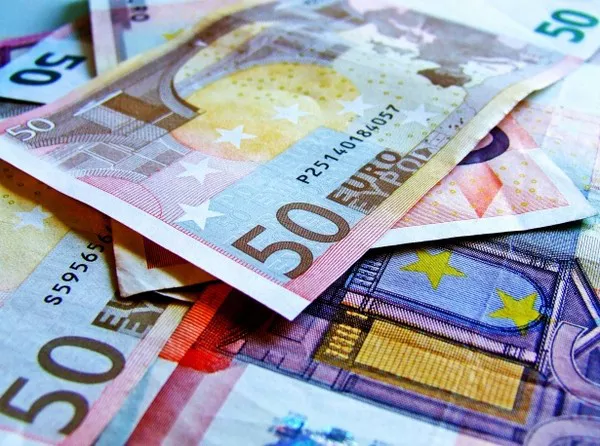In the intricate web of global finance, few institutions hold as much sway as central banks. Among these, the European Central Bank (ECB) stands as a symbol of monetary stability and a guardian of the Eurozone’s most precious asset—the euro. In this in-depth exploration, we delve into the multifaceted role of the ECB, dissecting its functions and unraveling the profound impact it wields on the euro, the currency shared by 19 European Union (EU) member states.
Understanding the European Central Bank
The European Central Bank, headquartered in Frankfurt, Germany, is the central bank for the euro and the currency authority for the Eurozone. It was established on June 1, 1998, as part of the European System of Central Banks (ESCB), succeeding the European Monetary Institute (EMI). The primary objective of the ECB is to maintain price stability within the Eurozone, with a clear mandate to ensure that inflation remains below, but close to, 2% over the medium term.
The ECB’s functions and responsibilities can be distilled into several key areas:
Monetary Policy: The ECB is responsible for formulating and implementing monetary policy within the Eurozone. It achieves this through various tools, most notably by setting the interest rates at which it lends to commercial banks. The main policy rate is the refinancing rate, which serves as a reference point for other interest rates in the financial markets.
Bank Supervision: In conjunction with national competent authorities, the ECB supervises significant banks in the Eurozone. This Single Supervisory Mechanism (SSM) aims to ensure the safety and soundness of the banking system.
Currency Issuance: The ECB oversees the issuance of euro banknotes and coins, aiming to ensure their uniformity and security.
Foreign Exchange Reserves: The ECB manages the foreign exchange reserves of the Eurozone member states, holding assets denominated in various foreign currencies.
Financial Stability: The ECB plays a vital role in maintaining financial stability by monitoring and addressing threats to the stability of the financial system.
Monetary Policy and the Euro
The ECB’s monetary policy decisions have a profound impact on the euro, influencing its value in the foreign exchange markets and shaping economic conditions within the Eurozone. Here’s how the ECB’s actions reverberate through the euro:
Interest Rates: One of the most direct ways the ECB influences the euro is through changes in its key interest rates. When the ECB raises the main refinancing rate, it becomes more attractive for banks to deposit their funds with the central bank, reducing the money supply in the market. This can lead to an appreciation of the euro as higher interest rates make euro-denominated assets more appealing to investors seeking higher returns.
Quantitative Easing (QE): Similar to other major central banks, the ECB has employed QE programs. These initiatives involve the purchase of government bonds and other assets, injecting liquidity into the financial system. QE can exert downward pressure on interest rates and potentially weaken the euro as investors seek higher returns elsewhere.
Forward Guidance: The ECB uses forward guidance to communicate its intentions regarding future monetary policy. Clear communication about the central bank’s stance on interest rates and asset purchases can influence market expectations and impact the euro’s value. For instance, signaling potential interest rate hikes can bolster the currency.
Inflation Target: The ECB’s primary mandate is to maintain price stability, with an inflation target of below, but close to, 2%. Achieving this target can support the euro’s value by instilling confidence in its purchasing power.
Economic Outlook: The ECB’s assessments of the Eurozone’s economic prospects, as conveyed through its communications and reports, can sway investor sentiment and influence the euro’s exchange rate. Positive economic outlooks and indications of a strong recovery can boost the currency.
Global and Political Factors
While the ECB’s monetary policy is a crucial driver of the euro’s value, it’s important to recognize that external factors also exert influence. Global economic conditions, geopolitical events, and market sentiment all play a role in shaping the euro’s performance.
Additionally, political developments within the Eurozone, such as elections, fiscal policies, and structural reforms, can impact the euro. These factors often interact with the ECB’s policies, creating a complex tapestry of influences on the currency.
Conclusion
The European Central Bank, as the guardian of the euro, plays a pivotal role in shaping the currency’s value and ensuring price stability within the Eurozone. Its monetary policy decisions, interest rate changes, QE programs, and forward guidance all send ripples through the foreign exchange markets, impacting the euro’s exchange rate.
However, the relationship between the ECB and the euro is not one-dimensional. It exists within the broader context of global finance, politics, and economics, where multiple variables interplay to determine the currency’s trajectory. As such, understanding the ECB’s role in the euro’s fate requires a holistic perspective that considers both the central bank’s actions and the complex web of factors that surround it.
In a world where currencies are more interconnected than ever, the ECB remains a linchpin of monetary stability, tirelessly working to safeguard the euro’s value and the economic well-being of the Eurozone.


